What is the variety of Yunnan coffee? the taste characteristics of Yunnan small grain coffee iron pickup and Katim flavor.
Professional coffee knowledge exchange More coffee bean information Please pay attention to coffee workshop (Weixin Official Accounts cafe_style)
When it comes to Asian coffee, Qianjie believes that Yunnan coffee in China definitely has a place, and coffee fans who have come to Qianjie to drink Yunnan coffee are also full of praise.
Then the front street today to talk to you coffee fans Yunnan coffee friends.
In fact, most of the coffee on the market in China today comes from Yunnan, which accounts for 98% of the country's coffee, basically representing China's coffee cultivation industry.
Characteristics of coffee production areas in Yunnan
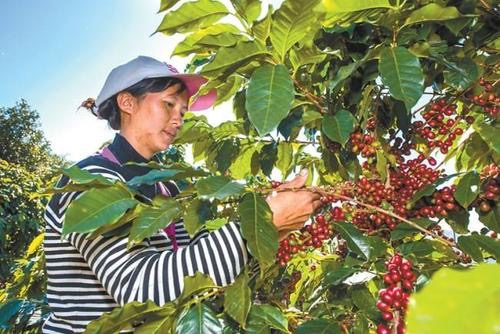
Yunnan is located in the southwest of China. The Tropic of Cancer runs through the south of Yunnan and belongs to mountainous plateau terrain. Among them, the middle altitude area of 1000-3500m accounts for nearly 90% of the province's land area. Yunnan's climate belongs to subtropical plateau monsoon type, with large daily temperature difference and abundant rainfall. Just like the coffee growing environment mentioned before in Qianjie, the high altitude area and suitable temperature and precipitation can grow high quality coffee cherries. Yunnan is in line with these conditions, so coffee cherries from Yunnan are destined to be of good quality.
According to Qianjie, the main planting areas of Yunnan Arabica coffee are in the south and west, among which Pu 'er, Baoshan, Dehong and Lincang are more famous, while Yunnan coffee in Qianjie is mainly from Baoshan, Yunnan Province. The flavor is strong but not bitter, fragrant but not strong, and it has regional characteristics.
Dehong
The birthplace of coffee in China, the region is 1,000 to 1600 meters above sea level and covers an area of 2000 hectares of coffee plantations. What's more, most of the coffee is grown organically here, making it one of the best quality coffees in the world.
PU 'er
Qianjie believes that most people have only heard of Pu 'er tea, but have not heard of Pu' er coffee bar, in fact, it can be China's coffee capital, in 2012, Pu 'er planting area of 43,433 hectares, coffee harvest area of 18,000 hectares, annual coffee production of 36,500 tons, of which 24,700 tons of export coffee. Pu 'er coffee industry has 70 registered enterprises, 30,000 households and about 1 million people. Pu 'er tea is known as the "Millennium Tea City" and is an important coffee producing area in China with the largest planting area, the highest yield and the best quality. It is also an important distribution center for international coffee business.
In 2013, the China Fruit Marketing Association (CFMA) officially declared Pu 'er the "Coffee Capital of China" and held a local barista competition to select national competition representatives to participate in the World Barista Championship, marking a new era in Pu' er coffee history.
Baoshan
According to Qianjie, the history of Baoshan coffee planting began in the mid-1950s. The first coffee seedling was introduced from Southeast Asia by Mr. Liang Jinshan, a patriotic overseas Chinese, and was rated as first-class in London as early as the late 1950s, which is enough to prove the high quality of Baoshan coffee cherry.
In recent years, with the expansion of international trade, Yunnan Baoshan Coffee is regarded as a top coffee in many European and American countries, so the product is not in supply. As recently as December 2010, China's General Administration of Quality Supervision, Inspection and Quarantine (AQSIQ) determined that the coffee was a product reflecting China's national geographical indication.
According to Qianjie, coffee cultivation in Yunnan has been known for a long time, mainly divided into four sections. Next, Qianjie will talk about the cultivation history of Yunnan coffee beans.
History of coffee cultivation in Yunnan
The first stage: In the 1880s, the Qing government was forced to sign a treaty with France to end the Sino-French War and open Mengzi (Mengzi County, Honghe Prefecture) as a treaty port. In 1889, Mengzi Customs opened and closed, opening the prelude of southwest border and foreign communication, and foreign businessmen gathered immediately, and foreign banks followed one after another.
Second stage: In 1902, a French missionary named Tian Deneng in Chinese brought coffee from Vietnam to a mountain village called Chu Kula in Dali, Binchuan County, Yunnan Province. To this day, there are still descendants of that batch of coffee reproduction surviving, and the ancient coffee forest tells the story of a hundred years in the morning dew and sunset.
The third stage: In 1952, experts from Yunnan Province Academy of Agricultural Sciences distributed 80kg coffee seeds to farmers in Lujiangba, Baoshan. A few years later, they directed large-scale planting, which led to the coffee trees swaying along the Yunnan-Myanmar Highway. Due to the huge demand for coffee in the Soviet Union, Yunnan's coffee cultivation achieved a rapid development.
The fourth stage: In 1988, Nestle established a joint venture company in China and began to support the development of local coffee industry in Yunnan by starting coffee planting projects. Yunnan coffee rose again. Since 1992, Nestle Coffee Agriculture Department has been established to guide and study the improvement and cultivation of Yunnan coffee, and to purchase coffee according to the price of the US spot market. Up to now, not only coffee giants such as Nestle, McClane, Kraft and Starbucks are engaged in coffee business in Yunnan, but also local coffee enterprises have gradually developed and expanded.
Yunnan coffee classification
The grading system of Kenya and Ethiopia has also been mentioned before Qianjie. In fact, Yunnan coffee also has its grading system, but because it is not mature enough on the whole, the grading system is also messy.
The following are the common classification standards for domestic coffee (divided into five grades according to the mesh size of 6.5, 6.0, 5.5 and 5.0 mm):
Grade I: 6.5 mm or more, full and complete particles.
Grade II: 6.0-6.4 mm, plump and uniform.
Class III: 5.3-5.9 mm, fuller and slightly less uniform.
Grade IV: 5.0-5.4 mm, incomplete meters, complete accounting for more than 75%.
Level 5: less than 5.0 mm, incomplete meters, complete accounting for more than 30%.
Next, Qianjie will give you coffee fans Amway about all the Yunnan coffee types and flavor characteristics of Qianjie at present.
Qianjie Coffee Yunnan Sunlight Catim Coffee Bean
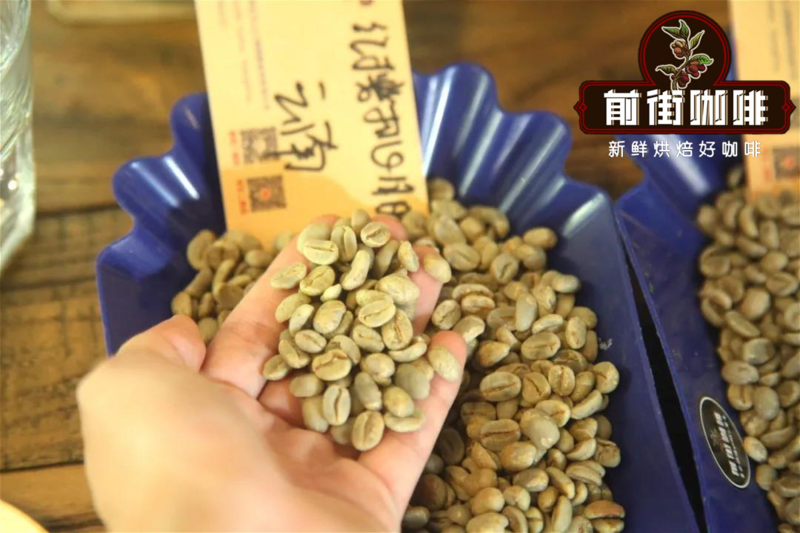
Country: China
Production area: Baoshan, Yunnan
Altitude: 1450-1550m
Breed: Katim
Treatment: Red cherry sun treatment
Flavor: Caramel, Cocoa, Ripe Puer, Herbal, Dried Fruit, Calming Fruit Acid
Katim species
The coffee bean variety on Front Street is called Katim. Katim is not the purebred Arabica bean we often say, but the hybrid of Tim of the Robusta species and Kadura of the Bourbon species. It was first developed in 1959 and popularized in Brazil in the 1970s and 1980s. With disease resistance and high yield, it occupies a place among coffee varieties in Central and South America. The coffee leaf rust crisis, which occasionally erupts in Central and South America, also fuels the use of katim coffee beans.
It is characterized by high yields, short plants that can be planted densely, and new reddish brown leaves. However, due to its rapid maturity and high yield, it must require sufficient fertilizer supply and shade, but according to Qianjie, its life span is very short, with an average of only ten years.
Moreover, the cup test performance of katim coffee beans was not significantly better than that of other commercial varieties when planted at low altitude. But grown at altitudes above 1200 meters, katim's cup flavor pales in comparison to bourbon, kadura and kaduai.
sun treatment of red cherry
The process of red cherry sun treatment is actually very simple, do not need to invest too much tools and equipment, in addition to the removal of floating beans steps, almost do not need to use water, low cost, according to Qianjie understand in the water resources are not rich and less rich areas are widely used.
The processing flow is as follows:
1. Harvest ripe coffee fruit
2. Preliminary selection of impurities and inferior beans
3. Screening floating beans: Pour coffee cherries into the sink. The ripe and full fruits will sink to the bottom of the sink, and the immature or incomplete fruits will float to the surface.
4. Sun drying: the sink in the bottom of the mature coffee fruit out, spread in the sun drying field, the moisture from 70% to 10-12% or so. The fruit should be turned several times a day to air dry evenly and covered at night to avoid moisture.
5. Dehusking: After about two weeks to four weeks of exposure, the outer layer of coffee seeds has dried, and then use a huller to remove the shell.
Qianjie Coffee Yunnan Arabica Coffee Bean (ration bean)
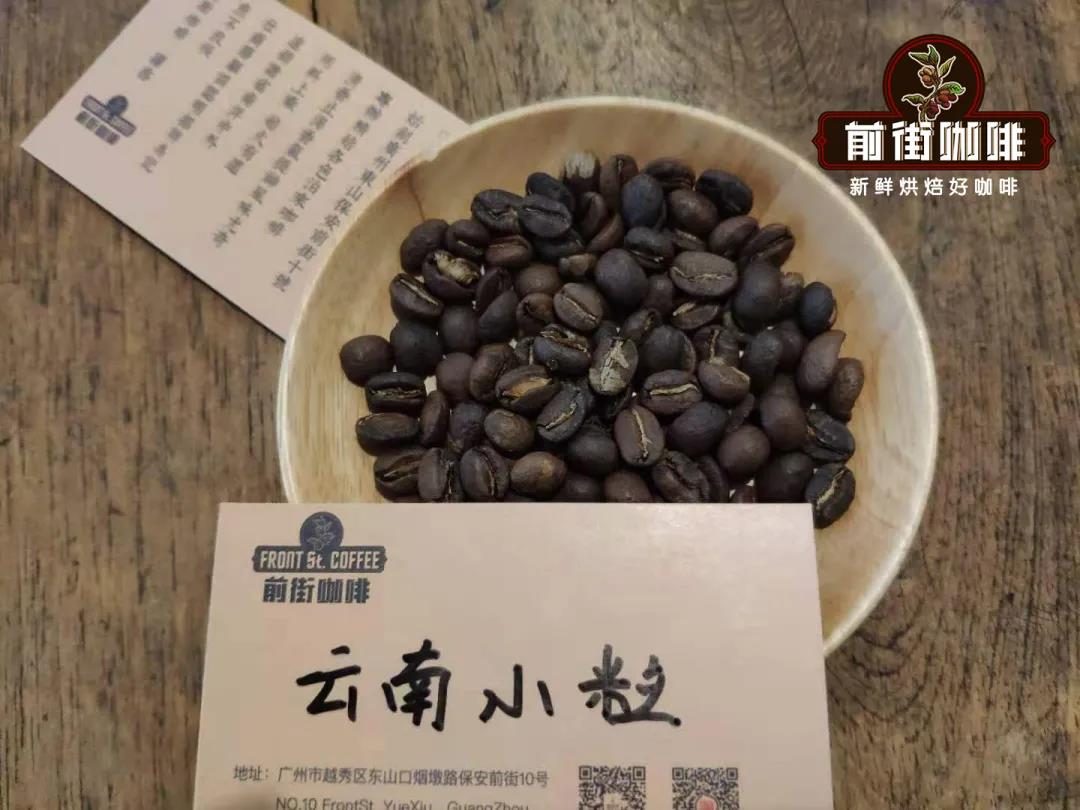
Country: China
Production area: Baoshan, Yunnan
Altitude: 1200m
Breed: Katim
Treatment method: washing treatment
Flavor: Herbal, nutty, chocolate, caramel
Qianjie this Yunnan Arabica coffee is also from Yunnan Baoshan katim species, but with the previous sun Yunnan katim different is this use of washing treatment method, then sun treatment coffee beans and washing coffee beans and what is the difference?
Front Street through the cup test brewing that the main flavor is different, sun coffee beans mainly with tropical fruit sour and sweet feeling, keep coffee beans naturally mellow, rich flavor layers, sometimes with a little wine fragrance! And washed coffee beans because of the fermentation process is better control, so the flavor is not as bad as the sun coffee beans, acid flavor and bright feeling is better! Therefore, the seven rations beans in Qianjie are mainly washed coffee beans, because it can better reflect the original flavor of a production area.
Water washing process
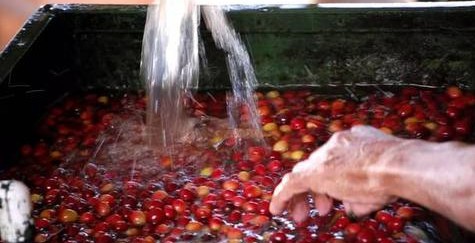
1. Harvest ripe coffee fruit
2. Preliminary selection of impurities and inferior beans
3. Screening floating beans: Pour coffee cherries into the sink. The ripe and full fruits will sink to the bottom of the sink, and the immature or incomplete fruits will float to the surface.
4. Peel and pulp removal: The selected good coffee fruit is put into a pulp sifter to remove the exocarp and pulp to leave seeds (coffee beans).
5. Fermentation to remove pectin: coffee seeds attached to a layer of mucous membrane (pectin) into the fermentation tank, the use of biological treatment by fermentation bacteria will dissolve pectin.
6. Washing to remove impurities: Since the fermentation bacteria will remain on the coffee beans, it is necessary to send the beans to the washing tank for cleaning and a second screening (defective beans will float on the water surface). In order to clean this step, a lot of clean water will be consumed in the process.
7. Coffee beans drying: usually machine drying or artificial drying of coffee fruit, so that the moisture content reduced to 10- 14%.
8. Remove endocarp and silver skin: finally remove the remaining endocarp and silver skin with a hulling machine, that is, complete the processing, and then package and transport the raw beans.
Qianjie Coffee Yunnan Huaguoshan Coffee Bean
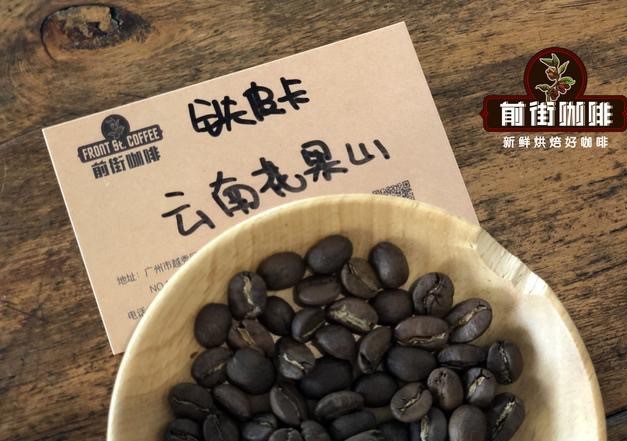
Country: China
Production area: Baoshan, Yunnan
Altitude: 1450-1550m
Type: Iron Pickup
Treatment method: washing treatment
Flavor: Citrus, Nutty, Plum, Melon, Brown Sugar, Black Tea
Compared with the two coffee beans mentioned above, this Yunnan Huaguoshan coffee bean has a sweeter flavor, which is also due to the fact that it is an iron pickup type coffee bean.
Ferropica species
Iron pickup is actually one of the oldest native coffee varieties. Its top leaves are bronze, the beans are oval or thin and pointed; the flavor is elegant, but the system is weak, the disease resistance is poor, and the fruit yield is small. Therefore, the price will be more expensive than the other two coffee beans on the front street.
Qianjie Coffee Huaguoshan Coffee Beans are actually planted in Yunnan Plantation in Qianjie Street. The following is a picture of iron sheet card planting in Yunnan Plantation in Qianjie Street. Therefore, the quality of this Yunnan Huaguoshan Coffee Bean will definitely be the best coffee beans coffee fans can drink in China.
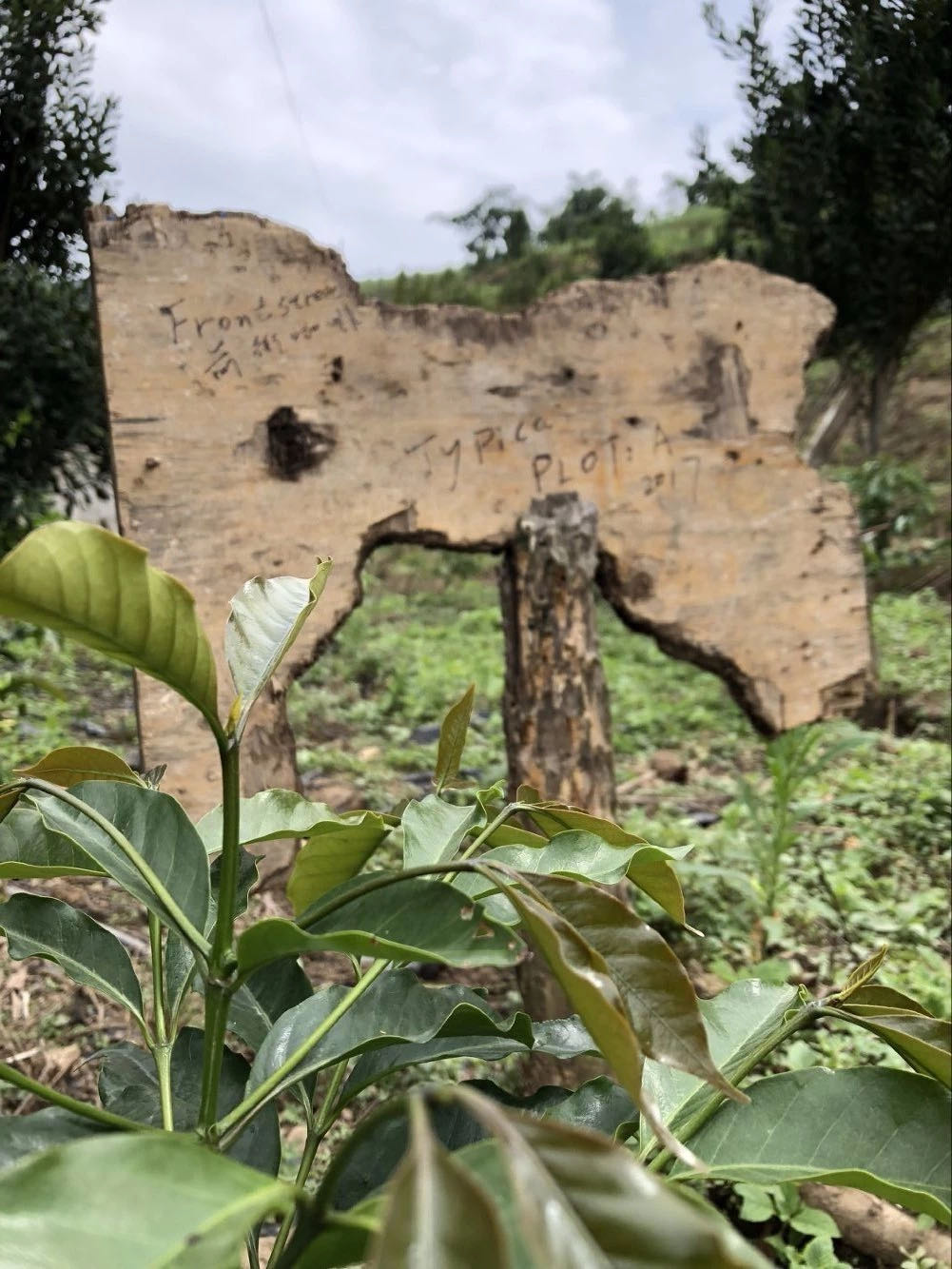
The above is some of the relevant knowledge of all Yunnan coffee in Qianjie at present. I believe that coffee fans and friends also have a further understanding of Yunnan coffee. Qianjie also hopes that these related materials will benefit coffee fans who love coffee.
More fine coffee beans, please add private WeChat Qianjie Coffee, WeChat: kaixinguoguo0925
Important Notice :
前街咖啡 FrontStreet Coffee has moved to new addredd:
FrontStreet Coffee Address: 315,Donghua East Road,GuangZhou
Tel:020 38364473
- Prev
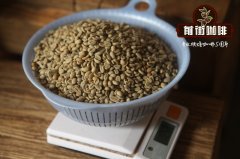
Flavor and taste of 90 kinds of sun-dried beans from heroin farmer IHCafe in St. Vincent processing Plant, Honduras
Professional coffee knowledge exchange more coffee bean information please follow the coffee workshop (Wechat official account cafe_style) Honduran coffee beans St. Vincent processing plant heroin farmers IHCafe 90 kinds of sun-dried beans flavor and taste characteristics? What kind of coffee are the 90 varieties of IHCafe? Product name: Honduras Beneficio San Vicente Jairo Galeas IHCAFE 90 Natural
- Next
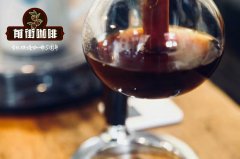
Development History of Yunnan small seed Coffee Iron truck | how much is a cup of authentic Yunnan small seed coffee
Professional coffee knowledge exchange more coffee bean information Please follow the coffee workshop (Wechat official account cafe_style) when it comes to tin card, coffee drinkers know that it is one of the coffee varieties with good flavor under Arabica, while the other ancient variety is bourbon. Then before we talk about the iron pickup, it is necessary to talk about its superior-Arabica.
Related
- Detailed explanation of Jadeite planting Land in Panamanian Jadeite Manor introduction to the grading system of Jadeite competitive bidding, Red bid, Green bid and Rose Summer
- Story of Coffee planting in Brenka region of Costa Rica Stonehenge Manor anaerobic heavy honey treatment of flavor mouth
- What's on the barrel of Blue Mountain Coffee beans?
- Can American coffee also pull flowers? How to use hot American style to pull out a good-looking pattern?
- Can you make a cold extract with coffee beans? What is the right proportion for cold-extracted coffee formula?
- Indonesian PWN Gold Mandrine Coffee Origin Features Flavor How to Chong? Mandolin coffee is American.
- A brief introduction to the flavor characteristics of Brazilian yellow bourbon coffee beans
- What is the effect of different water quality on the flavor of cold-extracted coffee? What kind of water is best for brewing coffee?
- Why do you think of Rose Summer whenever you mention Panamanian coffee?
- Introduction to the characteristics of authentic blue mountain coffee bean producing areas? What is the CIB Coffee Authority in Jamaica?

